One of Egypt’s Great Pyramids Is Being Covered in Granite, and People Are Outraged
A highly controversial move has seen the Egyptian Ministry of Antiquity discuss a project that aims to case a Giza pyramid in granite blocks.
While aimed at returning the monument to how it once looked in the past, archaeologists, researchers, and Egyptologists have spoken out against the decision, with many expressing their concern.
The Pyramid of Menkaure
One of the three major pyramids found on the Giza Plateau in Egypt has recently been at the center of great controversy.
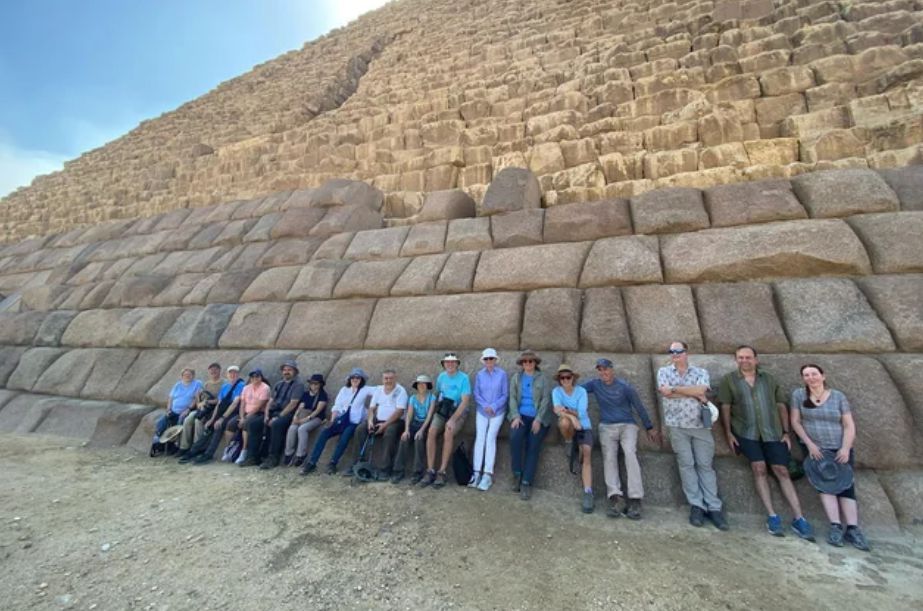
Source: @Outofthetombs/Reddit
News of a project, led by the head of Egypt’s Supreme Council of Antiquities, Mostafa Waziry, plans to cover the entirety of the structure in granite casing stones, which has upset a lot of people.
Restoring the Ancient Structure
When the pyramid of Menkaure was first constructed well over 4000 years ago, it was built from limestone, and many claim its entirety was cased in well-fitted granite blocks.
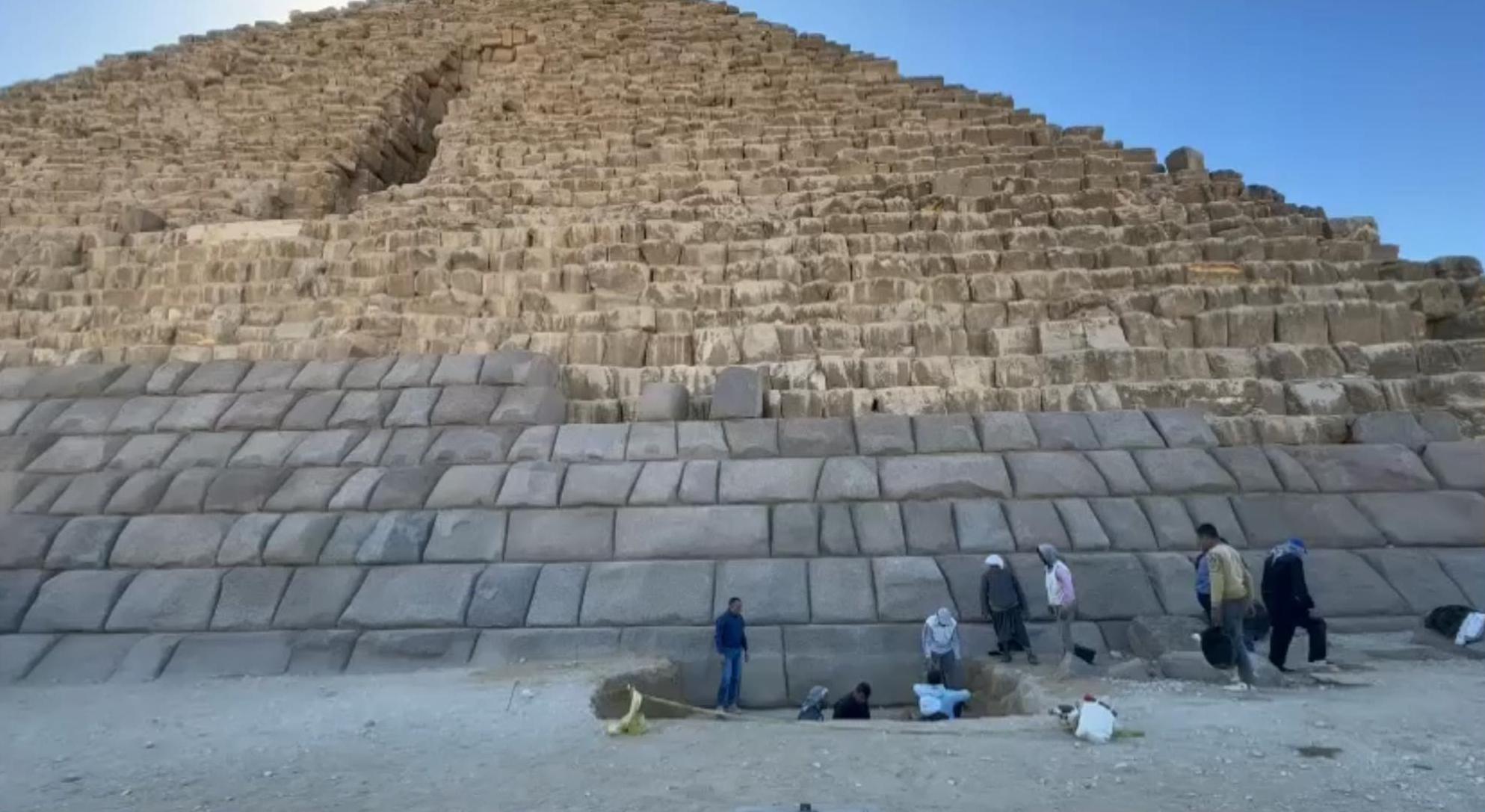
Source: Walk Into Egypt/Facebook
Only around four or five rows of granite casing stones are witnessed at the bottom today. Waziry believes it should be restored to its original state.
Waziry Releases News of Controversial Project
The public first became aware of the project last week when Waziry uploaded a video to Facebook.
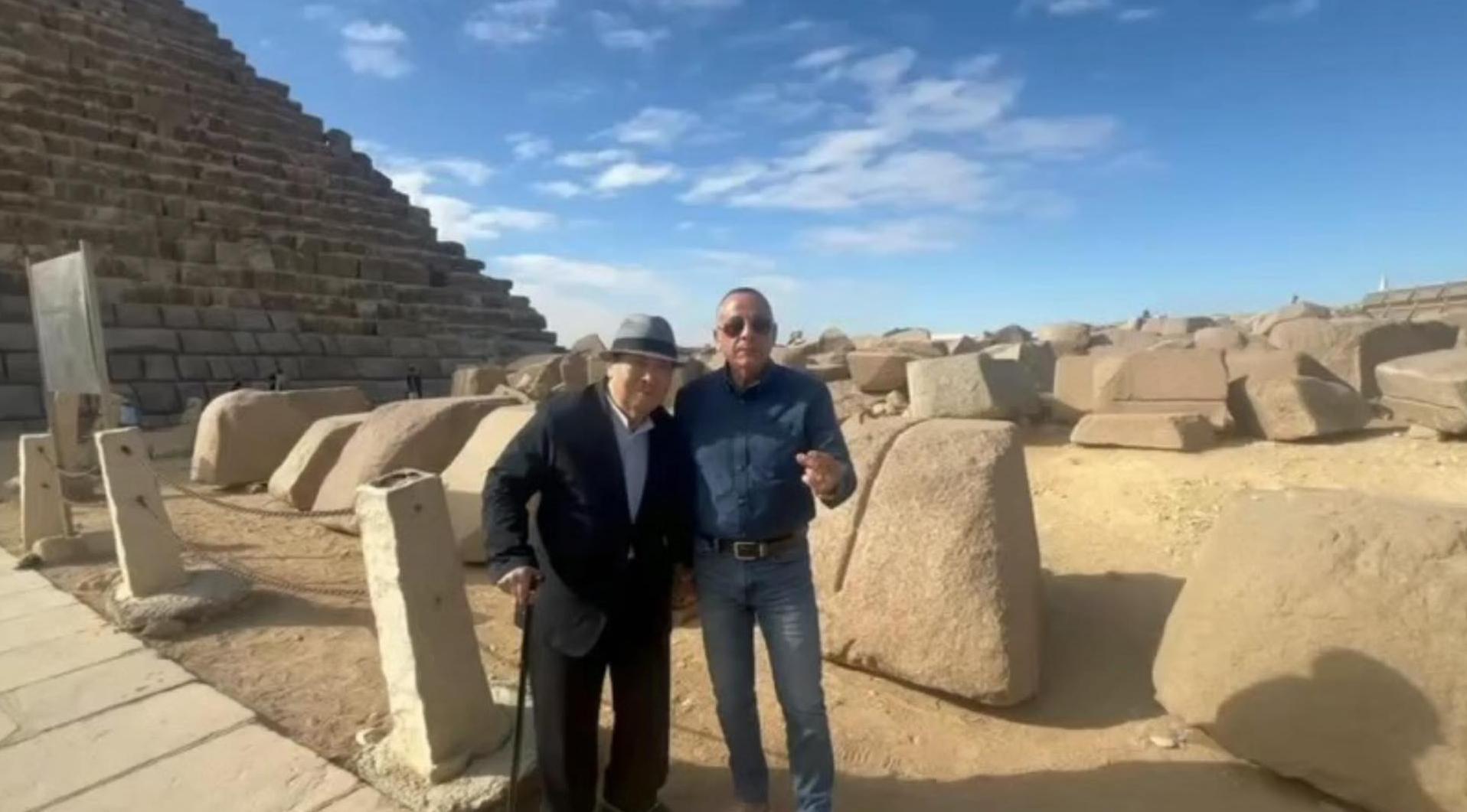
Source: Walk Into Egypt/Facebook
The video shows several workers standing around the base of Menkaure’s pyramid as they observe the ancient granite blocks.
The Project of the Century
During the video, Waziry explains the project, which aims to encase Menkaure’s pyramid in granite.
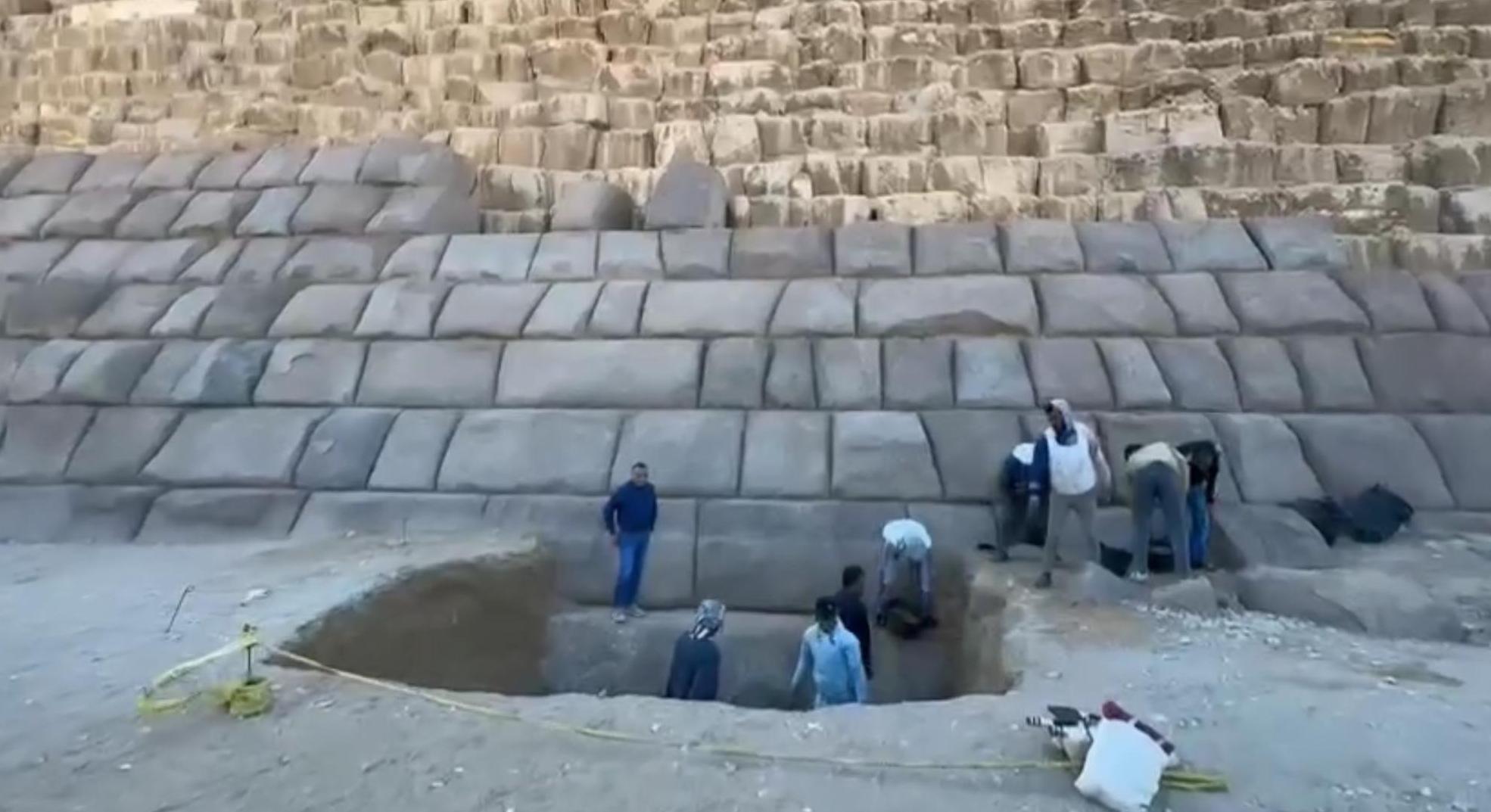
Source: Walk Into Egypt/Facebook
According to the head of Egypt’s Supreme Council of Antiquities, the restoration work is “the project of the century.”
Work to Last Over Three Years
The project would be in the hands of an Egyptian-Japanese team, and the restoration could take up to three years to complete.

Source: Freepik
Waziry, who’s currently overseeing the team’s efforts, claimed the project is “Egypt’s gift to the world in the 21st century.”
Public Outcry Against the Project
Not everyone agrees with Waziry’s comments, however. Nor do they see why the project was thought up in the first place.

Source: Freepik
Hundreds of negative replies from archaeologists and history enthusiasts litter the comments section of the video.
Egyptologist Speaks Out
One prominent Egyptologist, Monica Hanna, questioned the project and blamed it on poor management within the Egyptian heritage department.

Source: Freepik
“When are we going to stop the absurdity in the management of Egyptian heritage?” she asked.
Interference Can Cause Major Long-Term Damage
During an interview with Independent Arabia, Hanna explained numerous problems that may arise with such a project.
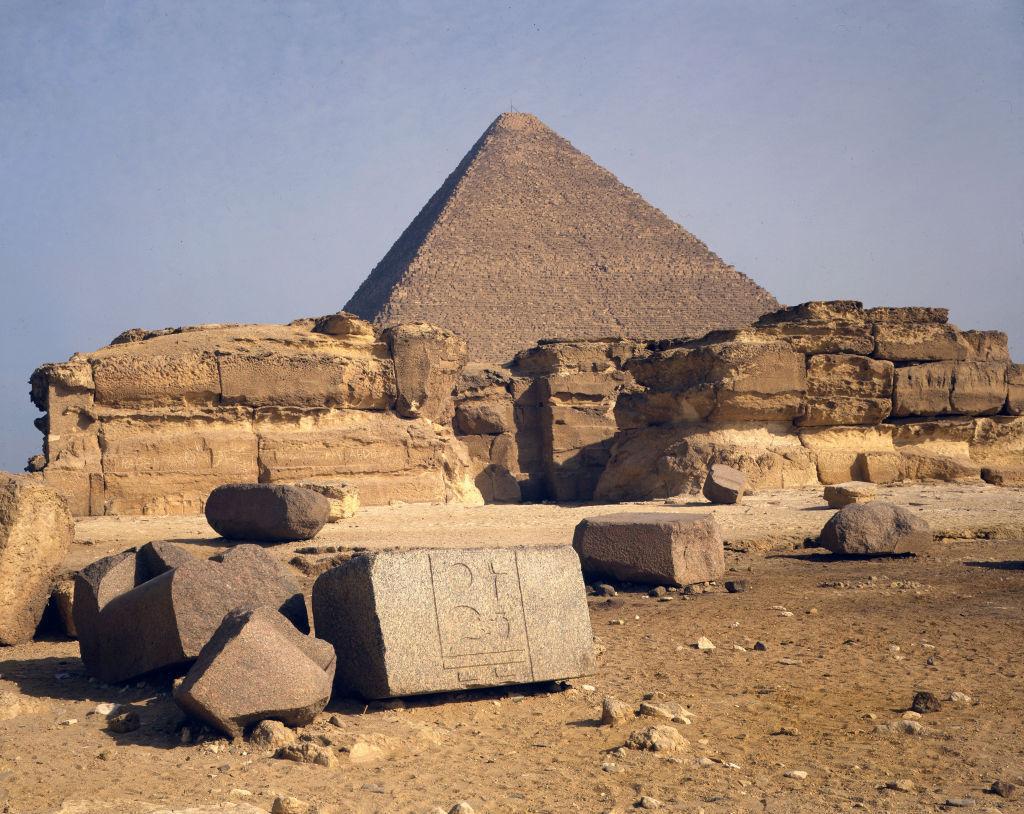
Source: Ethel Davies/Getty Images
“Interfering with the nature of the monument can cause visible problems and major damage,” she said.
Approach With Concern
Hussein Bassir, who sits as the director of antiquities at the Bibliotheca Alexandrina, also expressed concern.
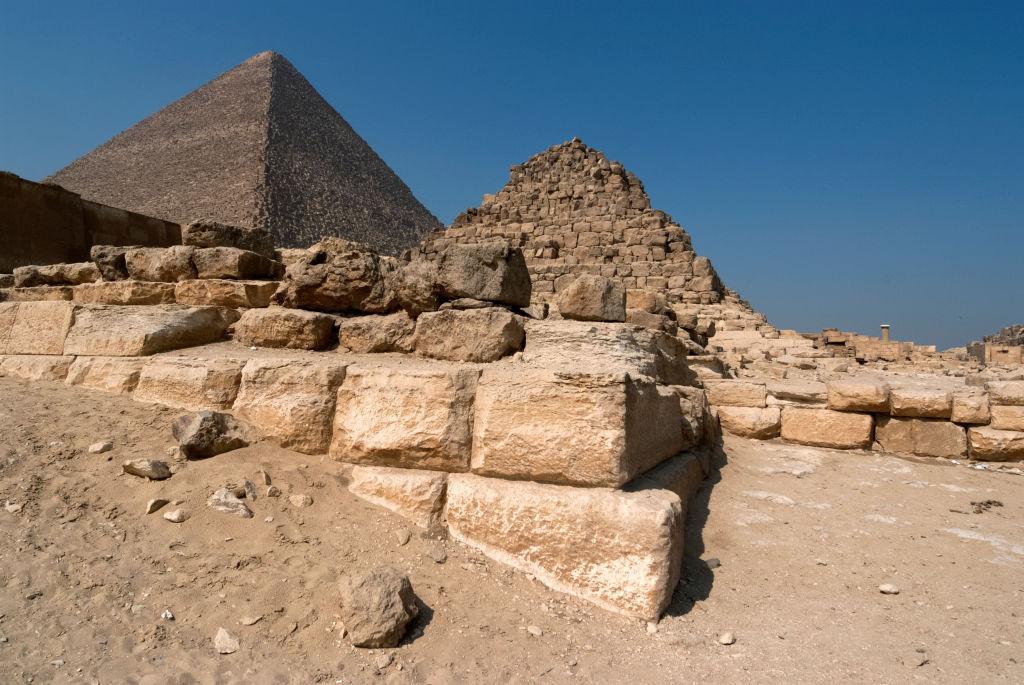
Source: Ethel Davies/Getty Images
He believes the project should be approached with caution as numerous risks are clearly evident.
Social Media Erupts with Concern
Many have shared their concerns about the project on social media.

Source: Freepik
“It is destroying an ancient monument, legacy for all humanity, not only the today’s country of Egypt. Please respect the past, do not make Disneyland from ancient legacy. These monuments not only for people who want to make nice selfie photo,” wrote one man.
The Project Could Work
Not everyone disagreed with the project, however. Salima Ikram, an Egyptologist in Cairo, claims there are ways to make it work.

Source: Freepik
“As long as the stones used are the ones found around it, and not adding new ones that do not belong to the pyramid,” he said.
Not Set in Stone Just Yet
With the considerable backlash, Waziry was forced to make an announcement claiming no plans had been finalized just yet.

Source: Freepik
“It’s too early now to discuss the reinstallation. Study results will be put forward to the international committee before any next steps are taken,” Waziry said.
Egypt's Antiquities Authority Hats Menkaure Project
The initiative, discussed above, to encase the smallest Giza pyramid Menkaure was unveiled in January by Mostafa Waziri, the secretary general of Egypt’s supreme council of antiquities.

Markus Winkler/Unsplash
Originally adorned with granite, much of Menkaure’s covering eroded over time. However, the sheer volume of online criticism that this project faced has prompted Egypt’s antiquities authority to halt work on the monument.
In 2020, Egypt Reopened Its Oldest Pyramid After Years of Restoration
After undergoing extensive restoration efforts, Egypt has officially reopened its oldest pyramid, the Djoser pyramid, to the public back in early 2020.
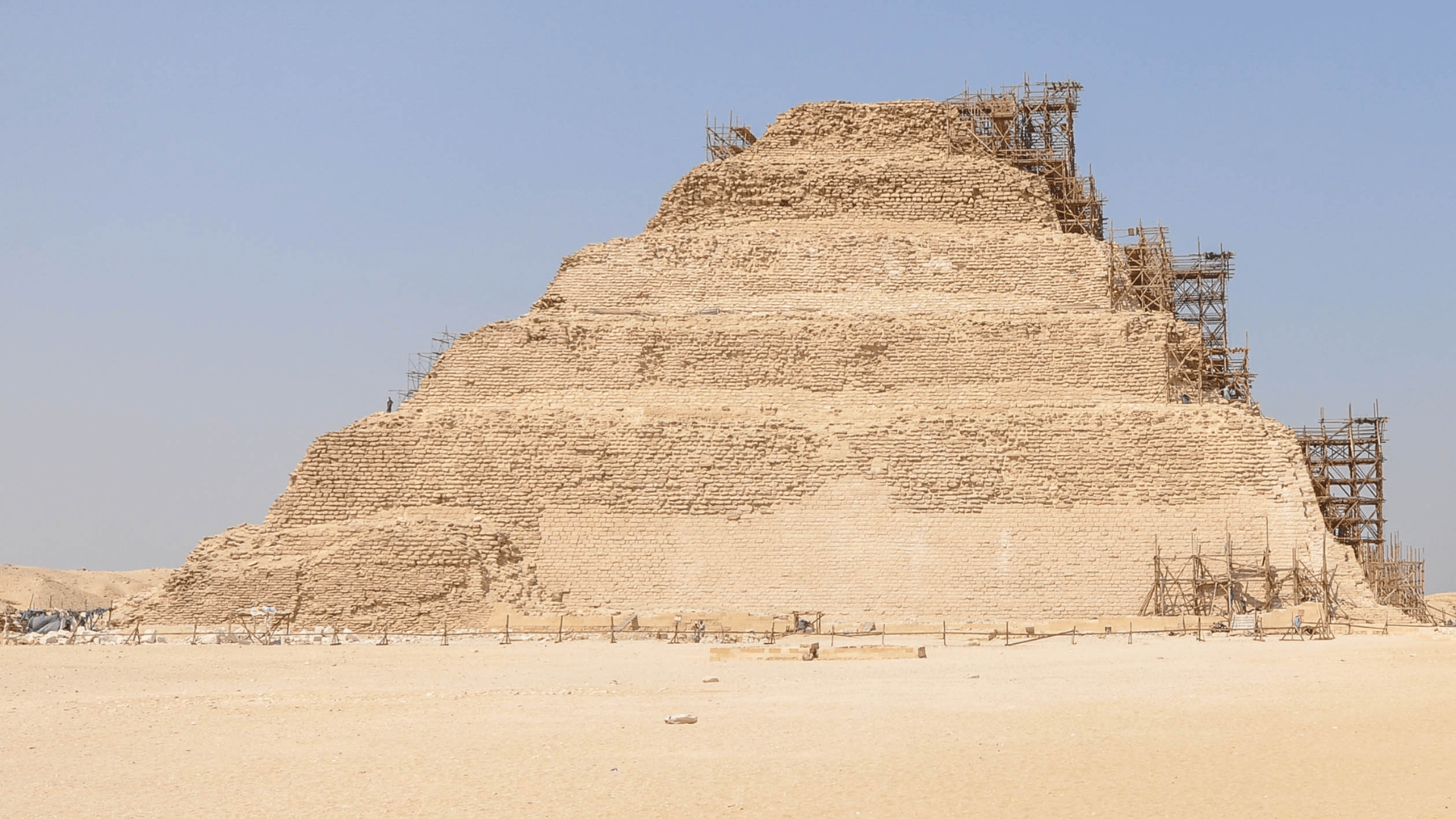
Jorge Láscar/Wikimedia Commons
This ancient structure, boasting a remarkable age of around 4,700 years, stands as a testament to the architectural prowess of its time.
Djoser Pyramid World's Oldest Stone Building Still Standing
Constructed entirely of stone and composed of six stacked terraces, the Djoser pyramid reaches an impressive height of 63 meters (207 feet).

Dr. Ondřej Havelka/Wikimedia Commons
Recognized by Al-Ahram as the world’s oldest monumental stone building still standing, it resides within the Saqqara funeral complex, situated outside the royal capital of Memphis—a UNESCO World Heritage Site located south of modern Cairo.
Where Did the Djoser Pyramid Get Its Name?
King Djoser, who ruled during the third dynasty of ancient Egypt (c. 2650–2575 BCE), commissioned the construction of this extraordinary pyramid.

Djehouty/Wikimedia Commons
Imhotep, Djoser’s chief minister, is widely acclaimed as the architect behind this marvel. Imhotep, a multifaceted figure described as a sage, vizier, and astrologer, left an indelible mark on Egyptian history through his architectural contributions.
The Importance of Imhotep
Imhotep pioneered the concept of cladding, wherein one material of a building is overlaid with another. His innovative approach was notably demonstrated through the application of stone cladding to walls and various structural components.
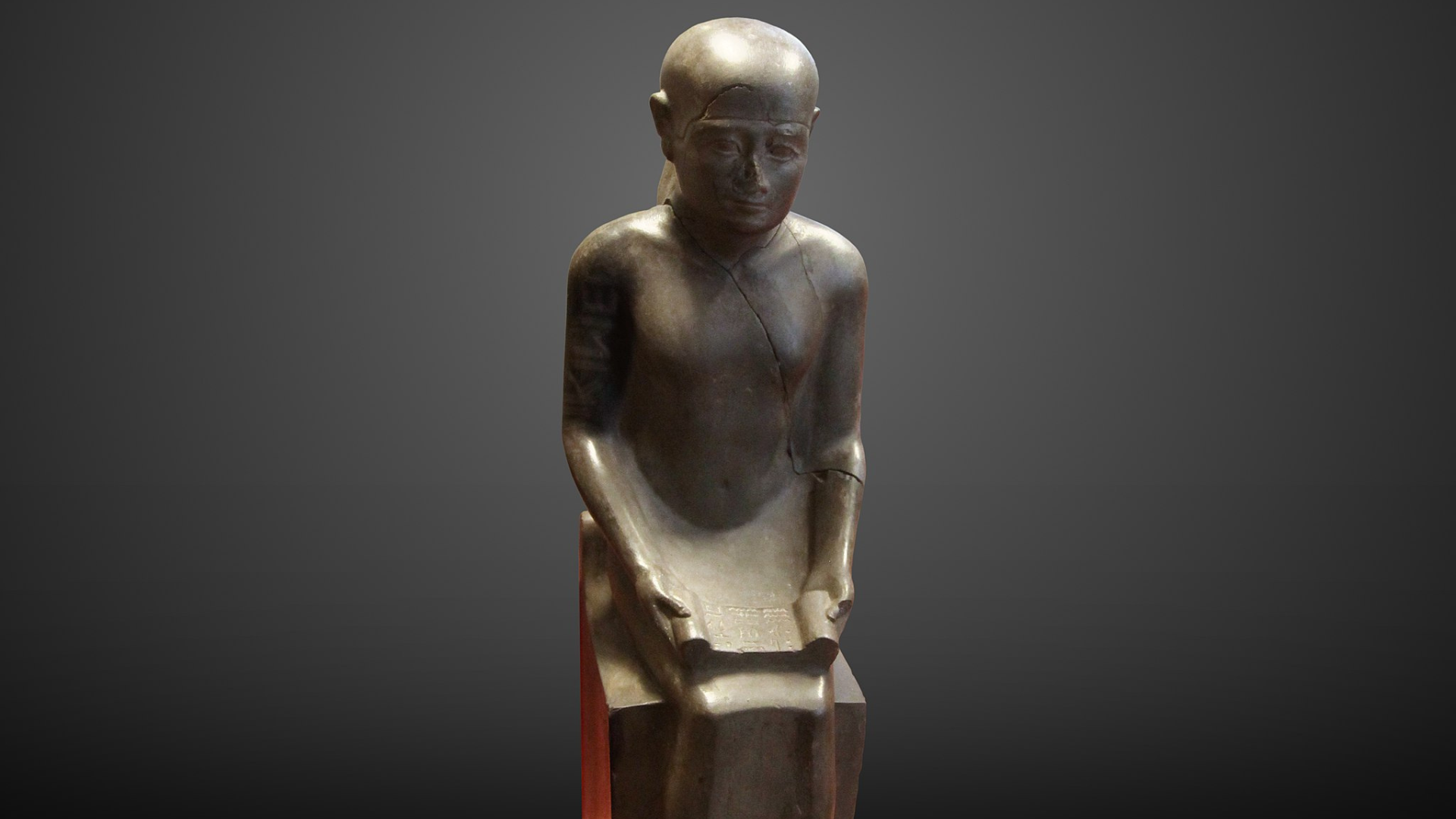
Louvre Museum/Wikimedia Commons
It is attributed to him that he may have been the trailblazer in utilizing stone columns for supporting architectural structures—an advancement marking a significant milestone in construction practices. Imhotep adeptly employed established techniques for stone walling, flooring, lintels, and jambs, showcasing his mastery in creating colossal structures entirely crafted from stone.
The restoration endeavors on the Djoser pyramid commenced in 2006, a meticulous process aimed at preserving and showcasing this archaeological treasure.
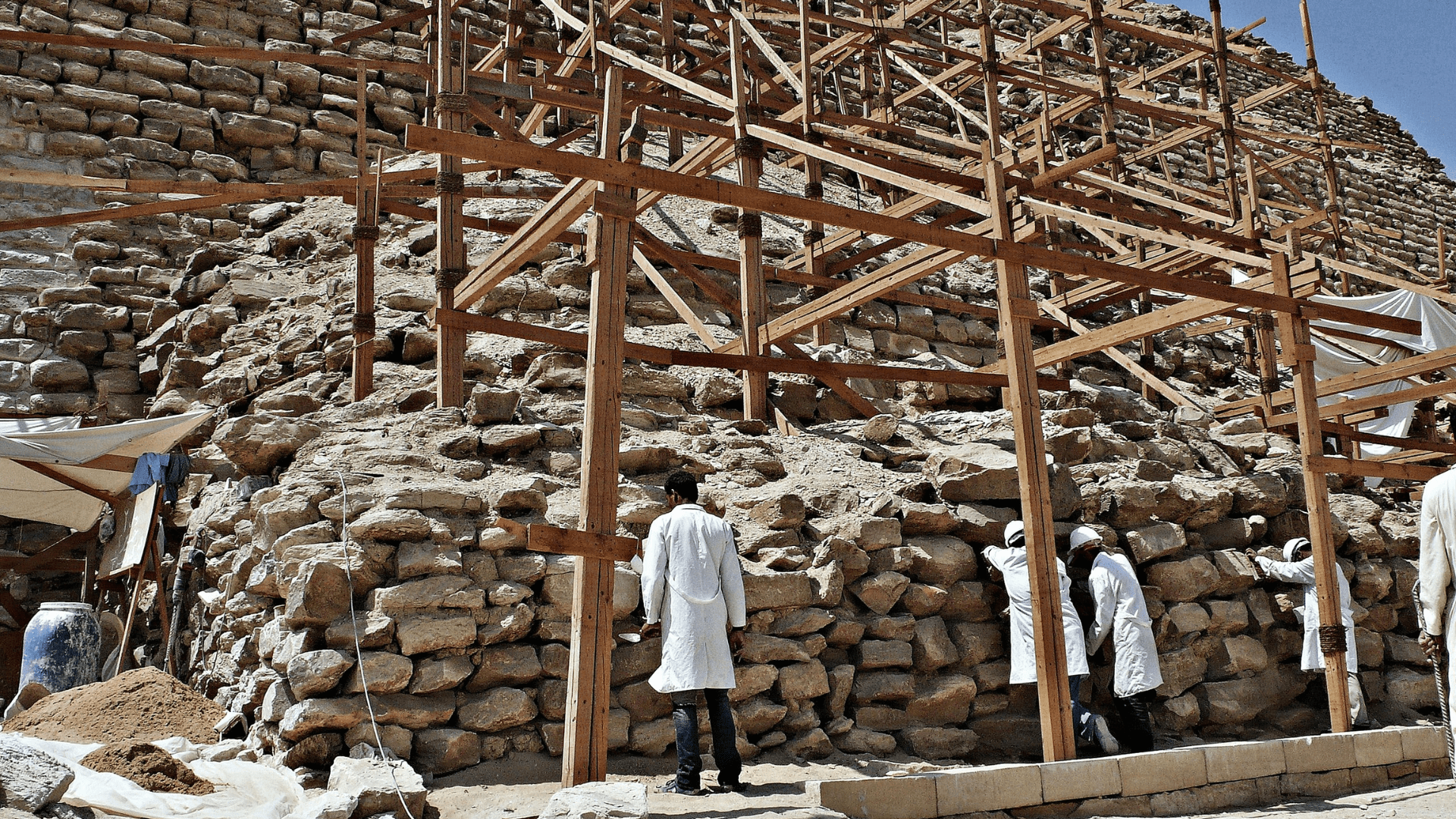
Alberto-g-rovi/Wikimedia Commons
However, these efforts faced interruptions in 2011 and 2012 due to Egypt’s popular uprising and the subsequent overthrow of President Hosni Mubarak. Despite these setbacks, restoration work resumed in 2013, underscoring Egypt’s commitment to safeguarding its cultural heritage.
Djoser Restoration Included Repair of Burial Chamber, Revealed Giant Sarcophagus
Al-Ahram reported that the restoration included the meticulous repair of collapsed ceiling blocks, revival of the burial chamber and corridors, and removal of rubble from the pyramid’s structure.
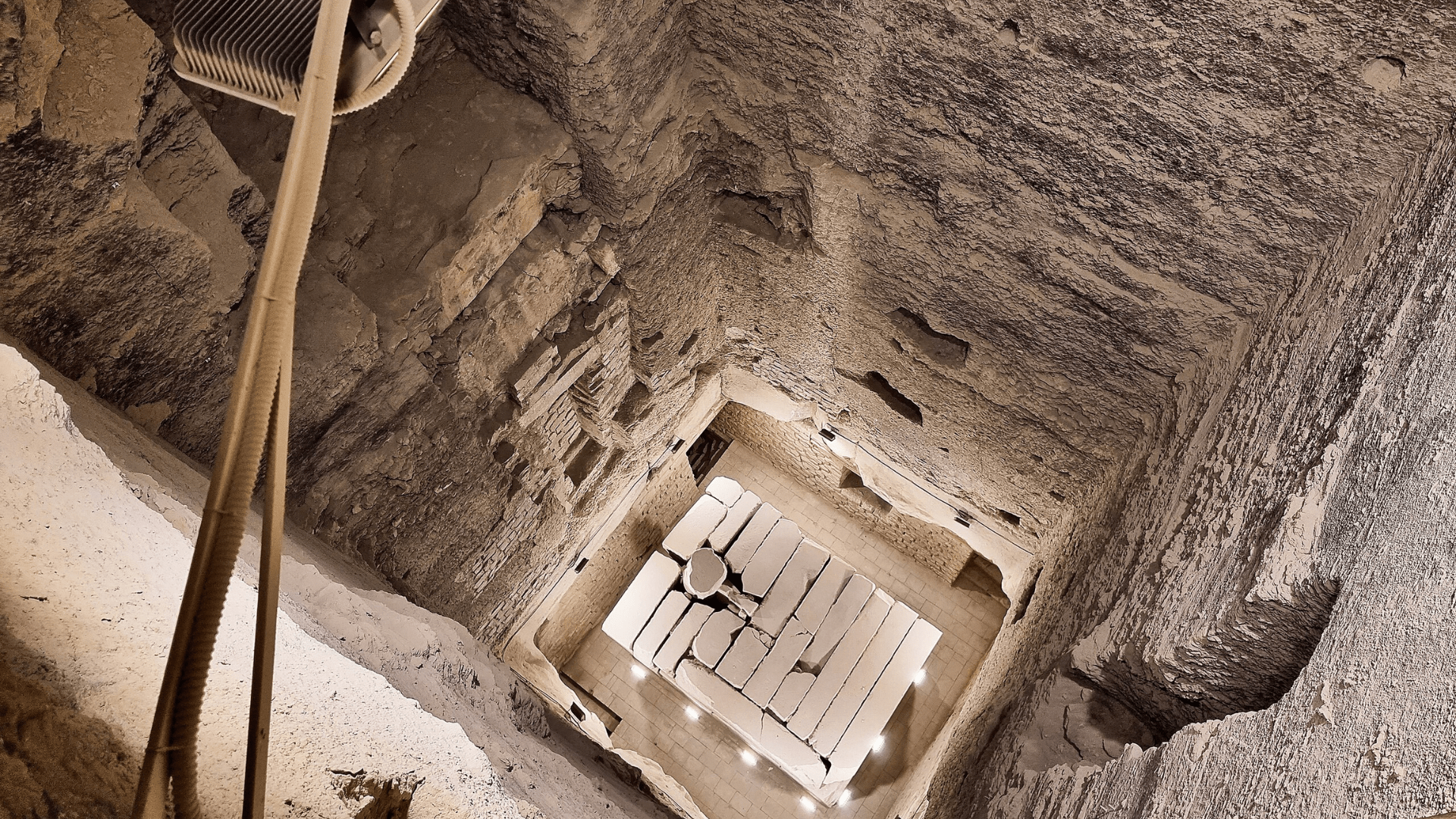
Prof. Mortel/Wikimedia Commons
The removal of debris revealed a striking 176-ton granite sarcophagus, standing nearly 5 meters (16 feet) tall—an awe-inspiring testament to the grandeur of ancient Egyptian burial practices.
Djoser Pyramid Boasts New Lighting and Accessibility
In tandem with the restoration efforts, the Djoser pyramid now boasts a new lighting system and enhanced accessibility features, including provisions for disabled visitors.

Prof. Mortel/Wikimedia Commons
These additions not only contribute to the overall visitor experience but also align with contemporary standards of inclusivity.
Minister of Tourism and Antiquities, Khaled El-Enany, shared that the comprehensive restoration project incurred a cost of 104 million Egyptian pounds (equivalent to $6.6 million).
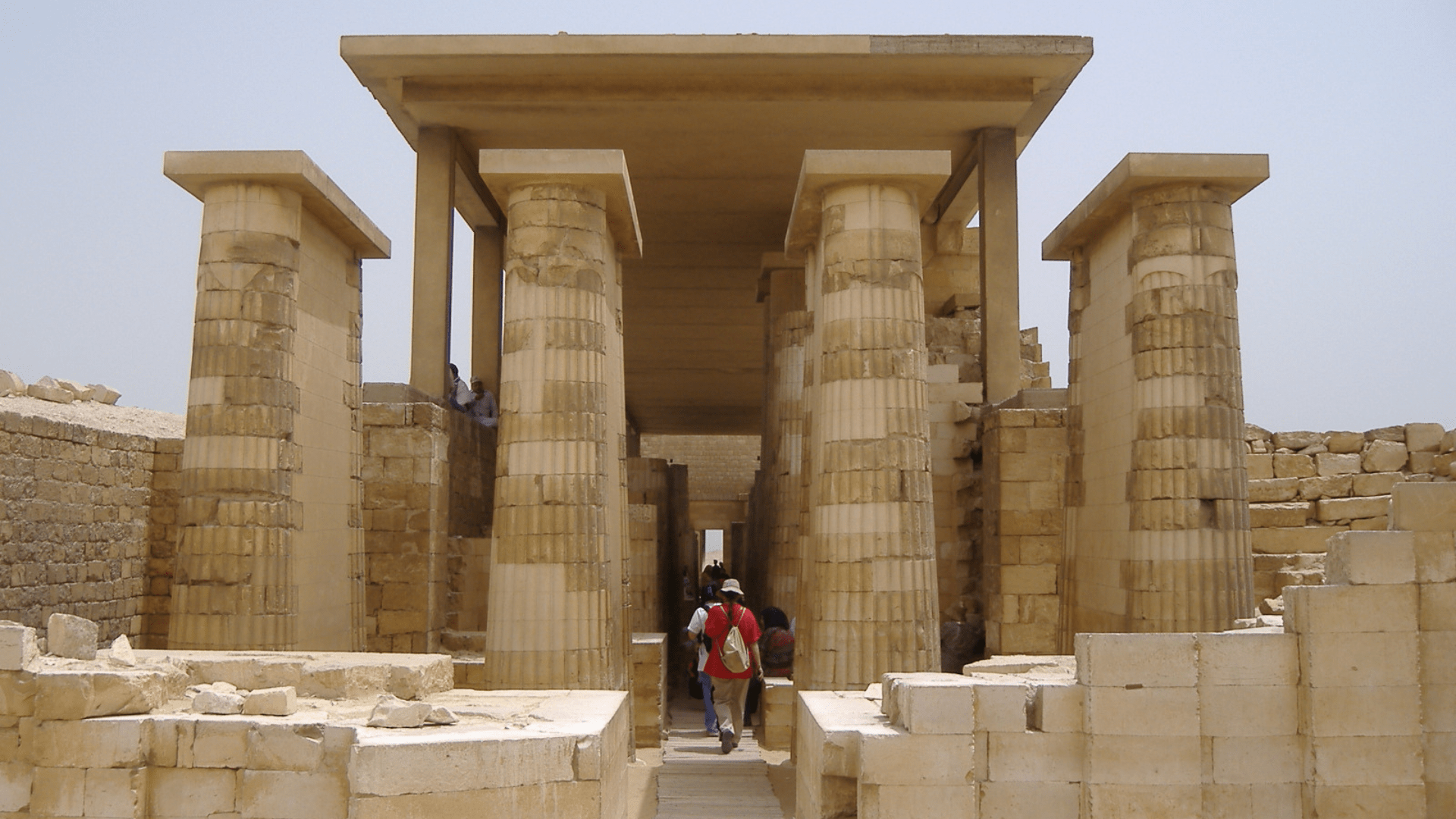
Hannah Pethen/Wikimedia Commons
This financial commitment underscores the significance Egypt places on preserving its cultural heritage and ensuring that future generations can marvel at the wonders of the ancient world.
Djoser Reopening a Pivotal Moment for Egypt and Global Archaeological Community
The reopening ceremony in 2020 marked a pivotal moment for Egypt and the global community interested in archaeology and history. It symbolizes the resilience of cultural preservation efforts even in the face of socio-political challenges.
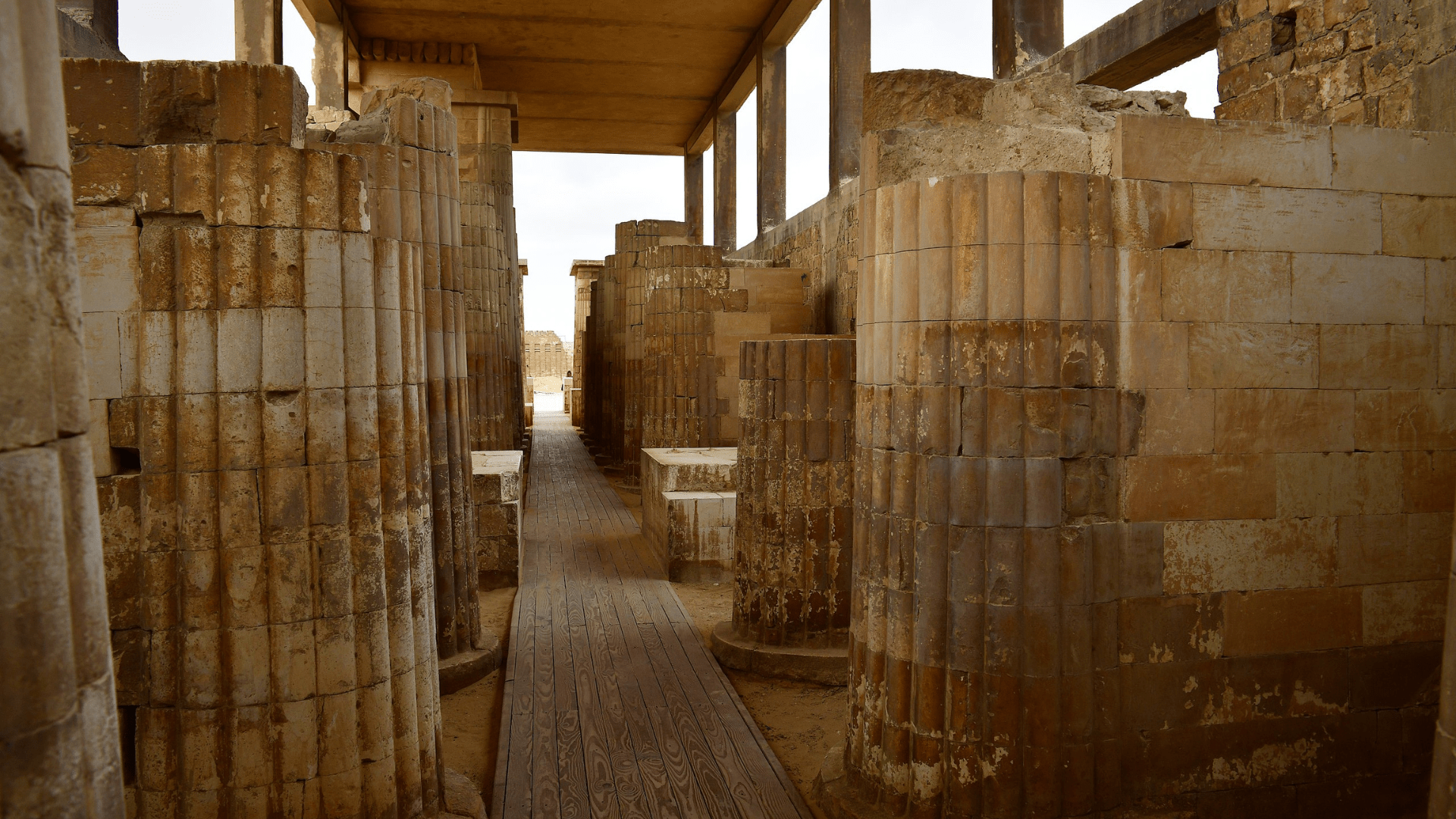
Panegyrics of Granovetter/Wikimedia Commons
As visitors now have the opportunity to explore the Djoser pyramid, they embark on a journey through millennia, connecting with the distant past and appreciating the architectural ingenuity that shaped civilizations.
